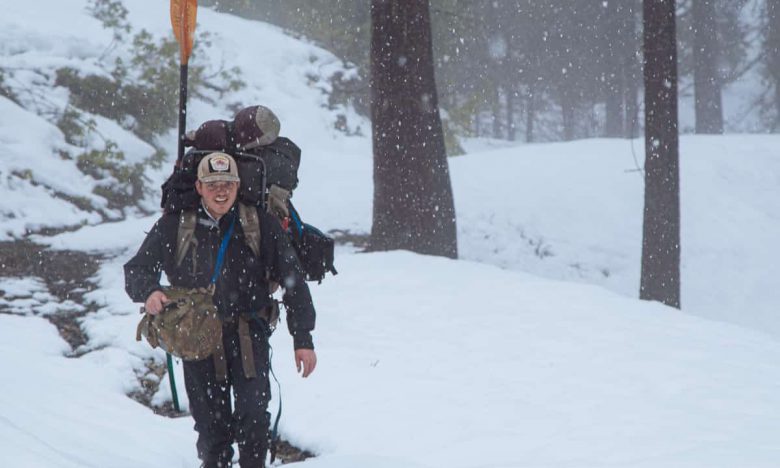Trade in the gray skies and falling snow for the turquoise water and snow-kissed peaks of Chilean Patagonia. The Futaleufu River is a great destination for winter rafting because it’s summer down there! This wasn’t my first trip to the Futaleufu and it won’t be the last either.
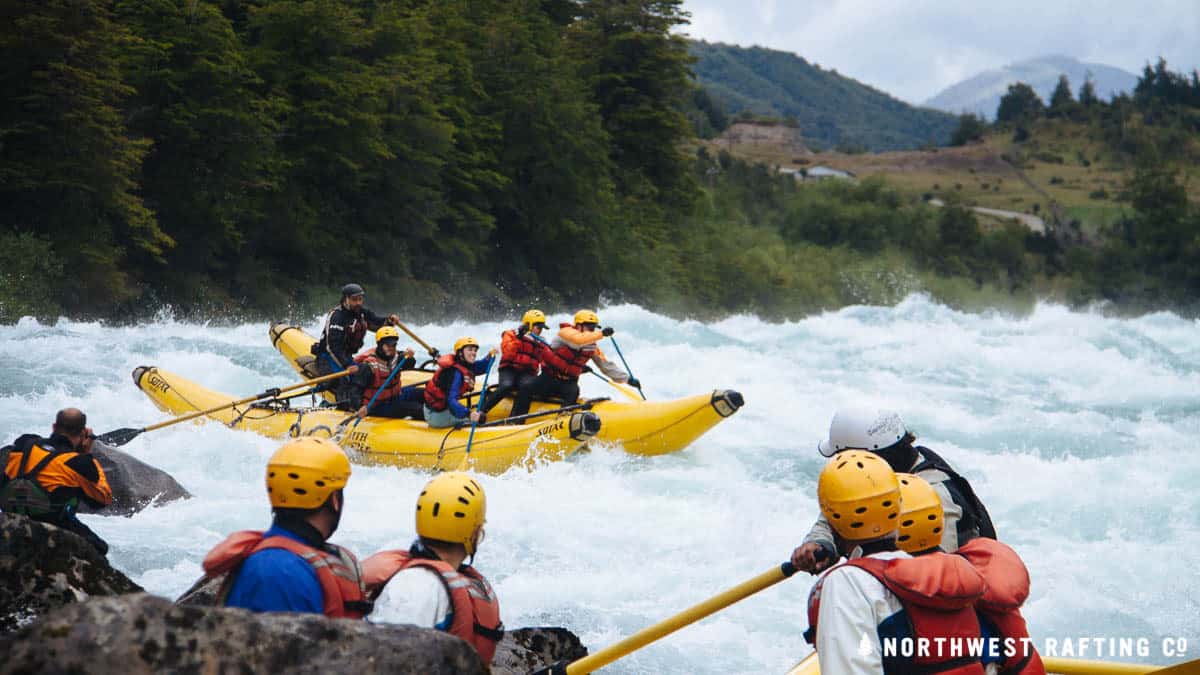
Getting There
After a long flight to Santiago, Chile’s capital, we flew to the small town of Balmaceda, the gateway to Patagonia. Our next objective was a 6 hour bus ride to the river. Luckily, the scenery of the region is worth staring at, and I realized again that there’s a reason one of the top outdoor clothing lines is named for this amazingly beautiful area. Peaks rise out of the mist, flush with glacial ice and contrast with the greenery that envelops you from every direction.
We spent the night at a comfortable El Pangue hotel where we dined on fresh fish and local Chilean wine. The next morning, we finally headed to the river.
The Futaleufu River
I’ve never seen any other river the color of the Futaleufu. The way the sunlight dances on it’s turquoise water makes it look almost radioactive. We started out in inflatable kayaks on an easy section of the river to get our feet wet, so to speak. That same afternoon, we head to the popular rafting section known as Puente a Puente, which means bridge to bridge. Here I encountered the whitewater I remembered from the trip 10 years ago. The turquoise river explodes into droplets of whitewater while crashing through the Class IV rapids.
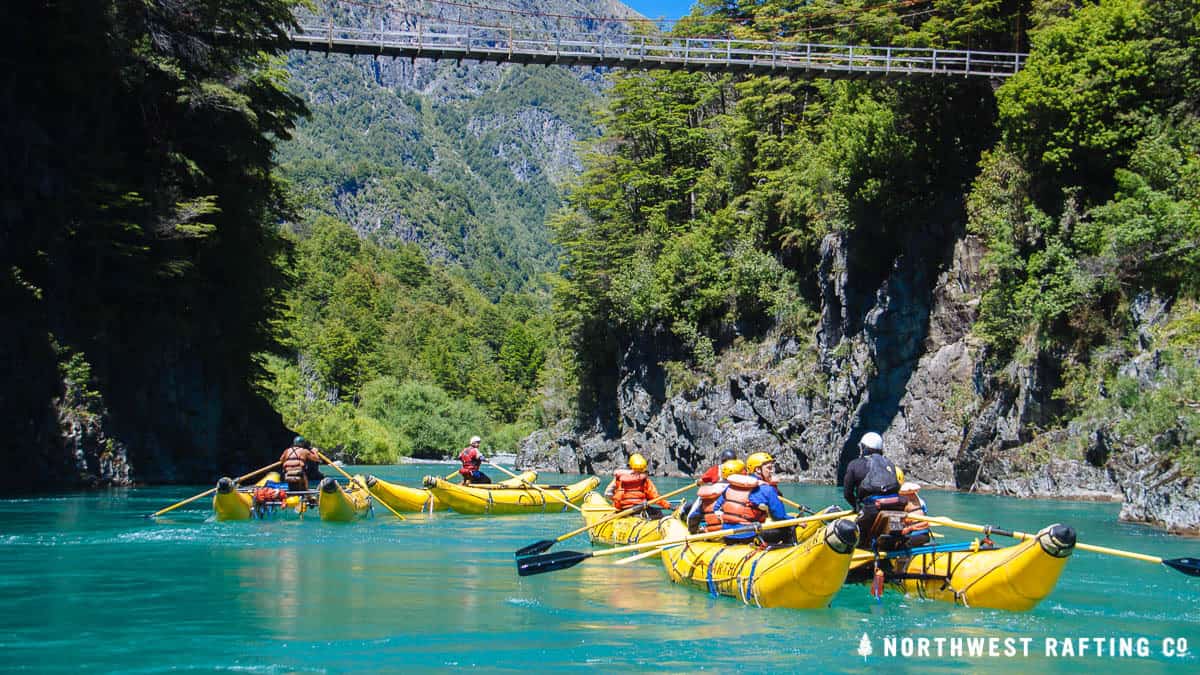
After an exciting afternoon on the river, we anxiously arrived in our first camp known as Mapu Leufu. The camps on this trip are permanent and plush; a fellow guest taught me that this is glamping: glamour-camping. With plumbing, cabanas and hot tubs, I found nothing to complain about. The guides prepared a great meal and after more wine and a hot tub soak with a stunning view of the Andean peaks, I fell asleep in a rafter’s paradise.
Exploring the Futaleufu Valley
Over the next few days, my love for the Patagonia region increased with each new activity. To reach one of our camps, we had to cross the Futaleufu’s mightiest rapids, the Class VI Zeta. We accomplished this feat with a Tyrolean Traverse, where we pulled ourselves across with the thunder of Zeta crashing below us. It was worth the effort to hike up to the Tree Camp. If you’ve ever wanted to live like an Ewok, you should see this camp. Cabanas encircle living trees with suspension bridges darting in all directions. No nails were used in this construction, which impressed the engineer-geek inside me.
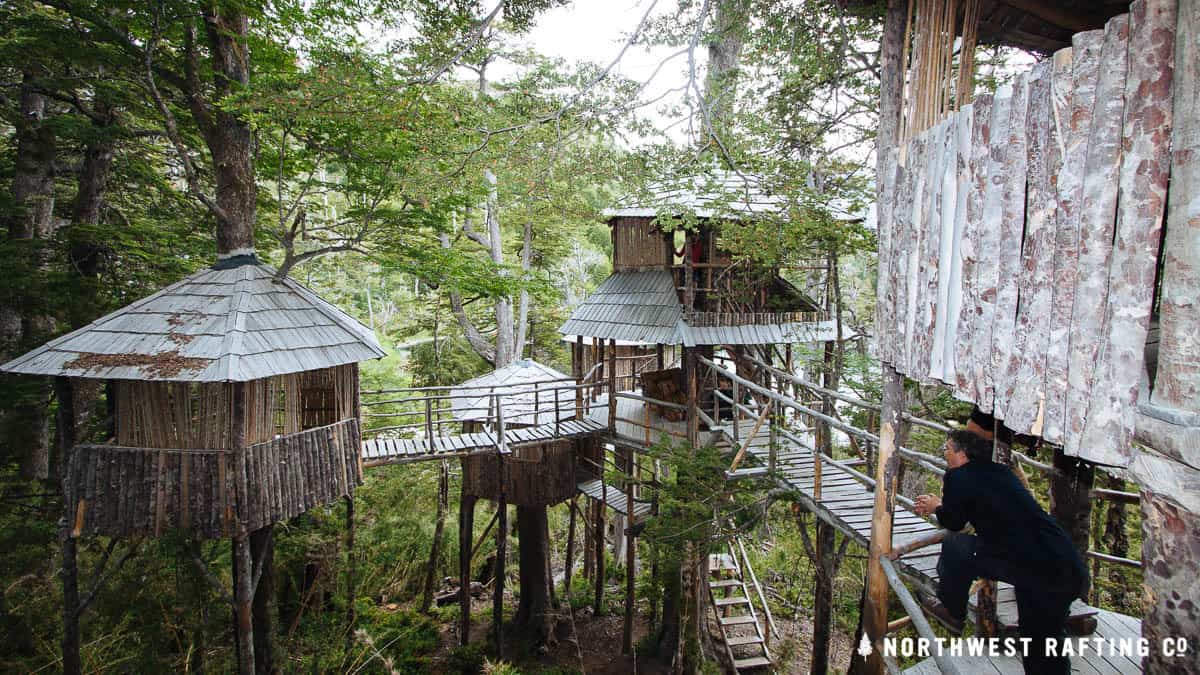
After leaving the Tree Camp the following day, we used a zip line to reach the other side of the river. It was thrilling to ride the line down over the river and then release 15 feet into the blue water. We also spent a day climbing a 300 ft. rock tower and rappelling down the face. The view from this summit won’t soon be forgotten. One of our favorite activities was a canyoneering adventure where we followed a side stream up from the river, wading through deep pools, jumping rock to rock and checking out the beautiful forest.
We spent the last day back on the river tackling the Puente a Puente section again, this time with the ease of having done it before. On this last day went furthe downstream for some big Class V rapids known as Mas o Menos (more or less) and Casa de Piedra (house of rock). As a boater, I love the challenge of the Fu’s big water, but was impressed by the safety precautions our guides took. We visited during the high water and had to portage a few rapids, but instead of being disappointed, I was happy to have our guides keeping our safety in mind rather than their egos.
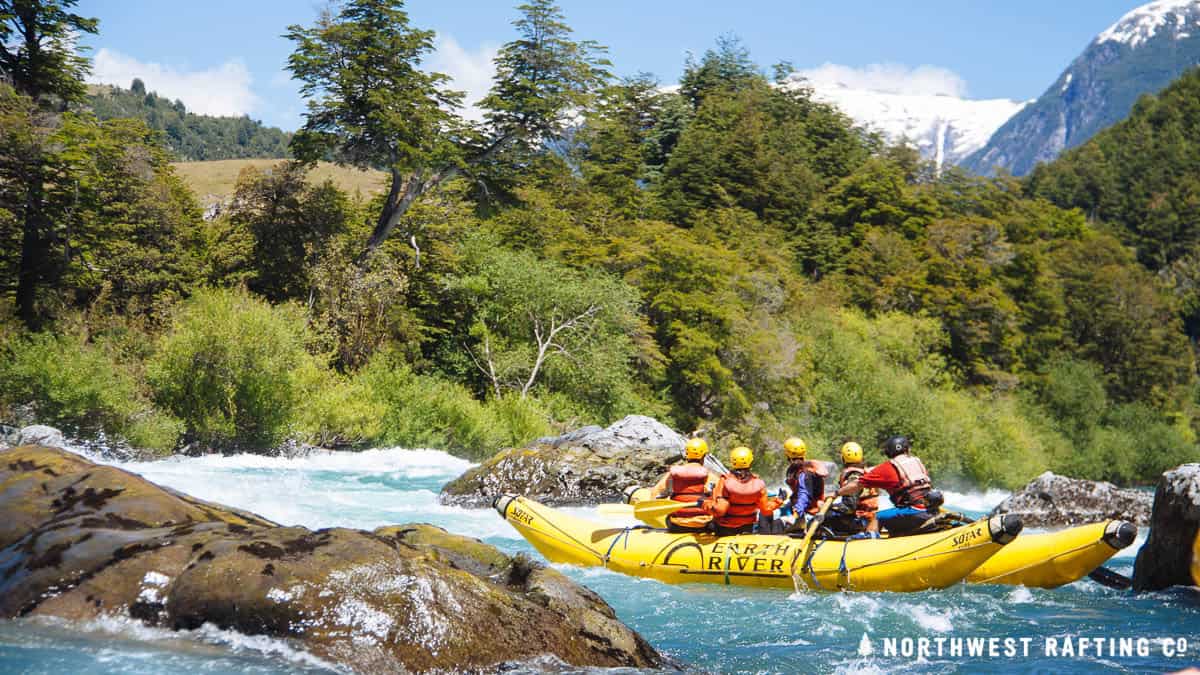
We headed out of the wilderness and spent another night at the lovely hotel El Pangue. The next day brought our bus ride through the tangled forest of Patagonia back to Santiago, where we headed home.
A Trip for Everyone
Having experienced the Futaleufu twice now, I understand why it is considered one of the best rafting trips in the world. The rapids challenge any boater, but with the guides’ experience and watchful eye, beginning paddlers also have a blast. The fact that the rapids can and are portaged when the water is too high means that kids can handle the easier Class III and then walk around the really big water.
I can’t imagine anyone that wouldn’t love the extra activities and extraordinary camps. Engaging in the different challenges each day kept the trip exciting and would entertain teens and people that enjoy rafting, but may not want to raft 8 days in a row. It was a good balance. The permanent camps were located in unique and serene places but outfitted with modern amenities like hot water and plumbing. You really get a sense that you’re on an extreme adventure, without sacrificing comfort.

